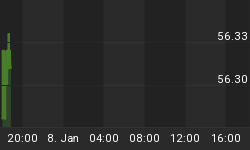The deadline for some type of debt-ceiling deal is now only five calendar days away (three trading days). The odds of no agreement of any kind coming together remain relatively remote. The political stakes for all players involved, including both parties and the President, are too high.
If our elected representatives fail to reach an agreement over the next five calendar days, it will be a public relations nightmare for all of them. More importantly, it will be a nightmare for them on Election Day. There will be no political winners if they fail to compromise. Politicians may not be good at many things, but they tend to be very good at looking out for their own interests, especially when it comes to getting re-elected.
Those looking for a resolution on Friday will most likely be disappointed. Obviously, the situation is fluid, but based on our research, it would not be surprising to see a compromise surface in a manner something like this:
- Both of the current bills (House and Senate) will fail to pass both chambers in their present form (emphasis on present form).
- As the 11th hour shifts to the 12th hour, leaders from both parties will produce a bill that has a good chance of passing in both houses. The compromise bill will most likely begin to take shape between Saturday night and Monday night.
- As the pressure mounts and the clock ticks, it will be very difficult for individuals or parties to block the "solution" by voting no.
- A comprise bill will most likely pass both houses on Monday or Tuesday and be signed into law before Wednesday, August 3.
The difficult part relative to the markets is when will the compromise become public? Saturday, Sunday, Monday, or Tuesday? The odds are good the compromise will come to light when the markets are closed, which means the futures may price in the news leaving little opportunity to redeploy cash. If the Dow opens up 200 or 300 points on Monday or Tuesday morning, you cannot capture that gain with cash on a "gap open".
The scenario above is one of many that may or may not play out over the next five calendar days. From a money management perspective, we must understand several possible outcomes and have plans for each. We are by no means locked into the scenario above, but we do have it as the highest probability outcome as of the close on Thursday.
The bigger questions for the markets may be:
- What form will the compromise bill take?
- What will the intermediate-term reaction be?
How we interpret the market's reaction will be highly dependent on the bill that passes. If the bill is fairly substantial in terms of taking a first step toward meaningful reform, and the market cannot sustain gains past the initial relief rally, it will be a bad sign for the health of the current bull market. Once the next step is taken on the debt issues in our nation's capital, the market will begin to focus on the economy, earnings, the Fed, and Europe.
Thursday's trading session was not as bad as it looked. Volume on the NYSE dropped 7% relative to Wednesday. The NASDAQ saw volume contract by 12%, which indicates institutions were not running for the exits near the close. Market breadth was negative, but also showed an improvement over the previous trading session.
On the debt debate Bloomberg reported:
Senate leaders are working privately to reach a compromise that could clear Congress by Aug. 2, the date the Treasury Department says the nation will breach its borrowing limit and run out of options for avoiding default.
Reid and his Republican counterpart, Minority Leader Mitch McConnell of Kentucky, maintained a private dialogue on developing a path to a debt-limit increase in the Senate, where bipartisan support is needed to gain the 60 votes necessary to ensure a vote on controversial legislation.
The New York Times noted indirectly that they "get it" in Washington:
Leaders of both parties and in both chambers said that it was essential to avoid a default on the federal debt.
The current market looks weak, but not end-of-the-bull market weak yet. The next few weeks should give us a good indication if the second half of 2011 will bring higher highs or lower lows in asset prices. As we mentioned on July 27, our concerns about the market are related to how things evolve after the current crisis passes. We do not believe the markets will have a clear path to the finish line in 2011 even if we get a positive result over the next five days. We need to see improvement in both the fundamentals and technicals over the coming weeks. If we see improvement, we are happy to become a little more optimistic about the remainder of the year. For now, we are cautiously optimistic because the risk-reward profile of the market remains favorable (see tables at bottom of July 28 article).
















